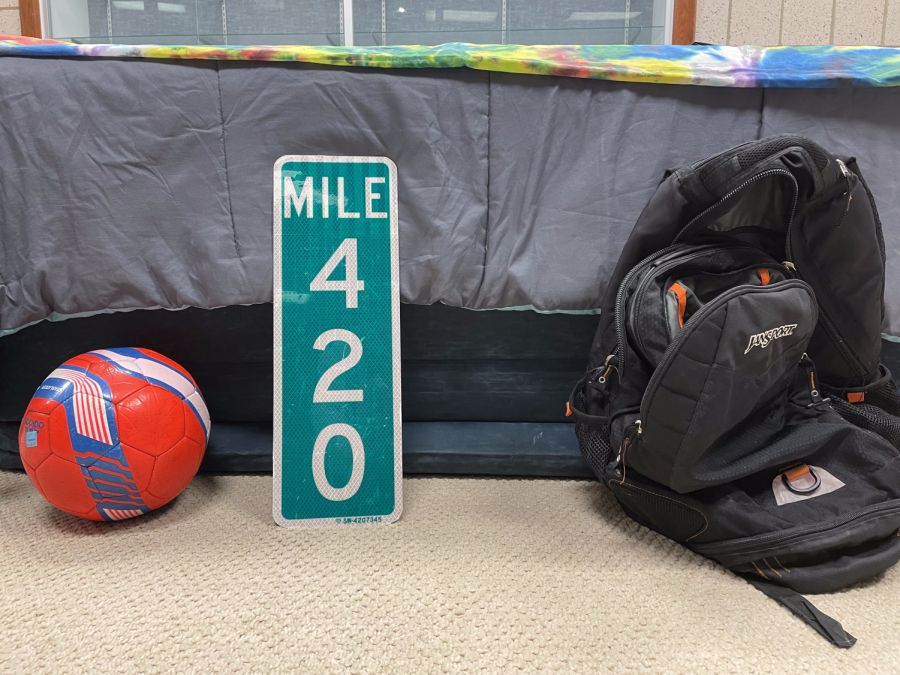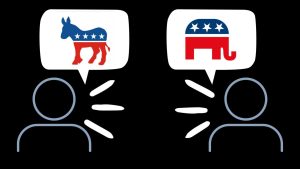One Pill Can Kill
Liberty hosts an informational meeting for parents about substance abuse
Non-profit organization Addiction Is Real set up a bedroom showcasing the many different areas where teens can/do hide drugs.
November 22, 2022
The recent uprising of fentanyl was among one of the main topics addressed by multiple drug abuse organizations on Nov. 9 in the auditorium.
Andree Swanson, a public information officer at the Drug Enforcement Administration St. Louis Division, gave a presentation called “One Pill Can Kill.” Swanson told about the lethality of fentanyl, and why it is considered a public safety crisis. “In 2021, more than 107,000 people died of a drug overdose,” Swanson said. “That’s more than car accidents, more than suicide, and more than gun violence.”
Swanson shared that the only two public safety alerts that the DEA has given out in their entire history were both regarding fentanyl, once about six years ago when it first arrived and once last September when fake pills started popping up.
Swanson emphasized how potent fentanyl is. “The recorded quantities of fentanyl that the DEA seized in 2021 is enough to kill every single person in America,” she said.
Swanson gave alarming statistics all throughout her presentation, a lot of them just from our division; like how the DEA has seized almost 700 pounds of fentanyl just this year, from our division. Our division only covers Missouri, Kansas, and Southern Illinois.
“We’re not down on the border, we’re in the middle of America, but we’re a thoroughfare to the North and the Northeast, and as a result, we are seeing more and more fentanyl coming this way,” she said.
Swanson then moved on to speak specifically about the fake pills that are circulating our home, and how accessible they are. Fake pills have been seized in every state in America.
“We seized 20 million pills in 2021, more than 2019 and 2020 combined,” she stated.
One of the most frightening things about these pills is that they make it hard to tell which is real and which is fake.
“The lethal amount of fentanyl is equivalent to 10 to 15 grains of salt,” Swanson said, “or two milligrams.” Taking just one wrong pill can kill you.
Amanda Ruback is a registered nurse working on the Poison Control Hotline at SSM Cardinal Glennon and was the event’s first guest speaker. Ruback mostly shared insight on what substances are commonly used by young teens and children, and how not all of them are outright poisonous but can be when ingested by young children. One of the worst, Ruback says, are edible cannabis products.
“We are seeing a lot more young children, especially toddler age (under 5), with exposure to the edible products,” and that “as a Poison Center nurse, I know that whatever amount is available to a child, they will eat it if it tastes good,” Ruback stated.
Ruback stresses the importance of safe storage of our medicines, for the safety of our families and any guests in our home.
Ruback wrapped up by giving advice on prevention of drug abuse, whether intentional or unintentional, by young children and teens, and gives resources for more information, like their blog ‘Trending Topics,’ their app ‘Poison Help Missouri,’ and their 24-hour hotline: 1-800-222-1222.
While not many parents were present, the ones that had been were very engaged, asking good questions, and listening well. We’re taking a step in the right direction; people are wanting to educate themselves and that’s monumental. I would even suggest that other students go to these meetings. I was surprised that we don’t talk about this more often in school, and I was surprised by how little I actually knew. If you can, take the time to go to one of these meetings. You never know what you might learn.













